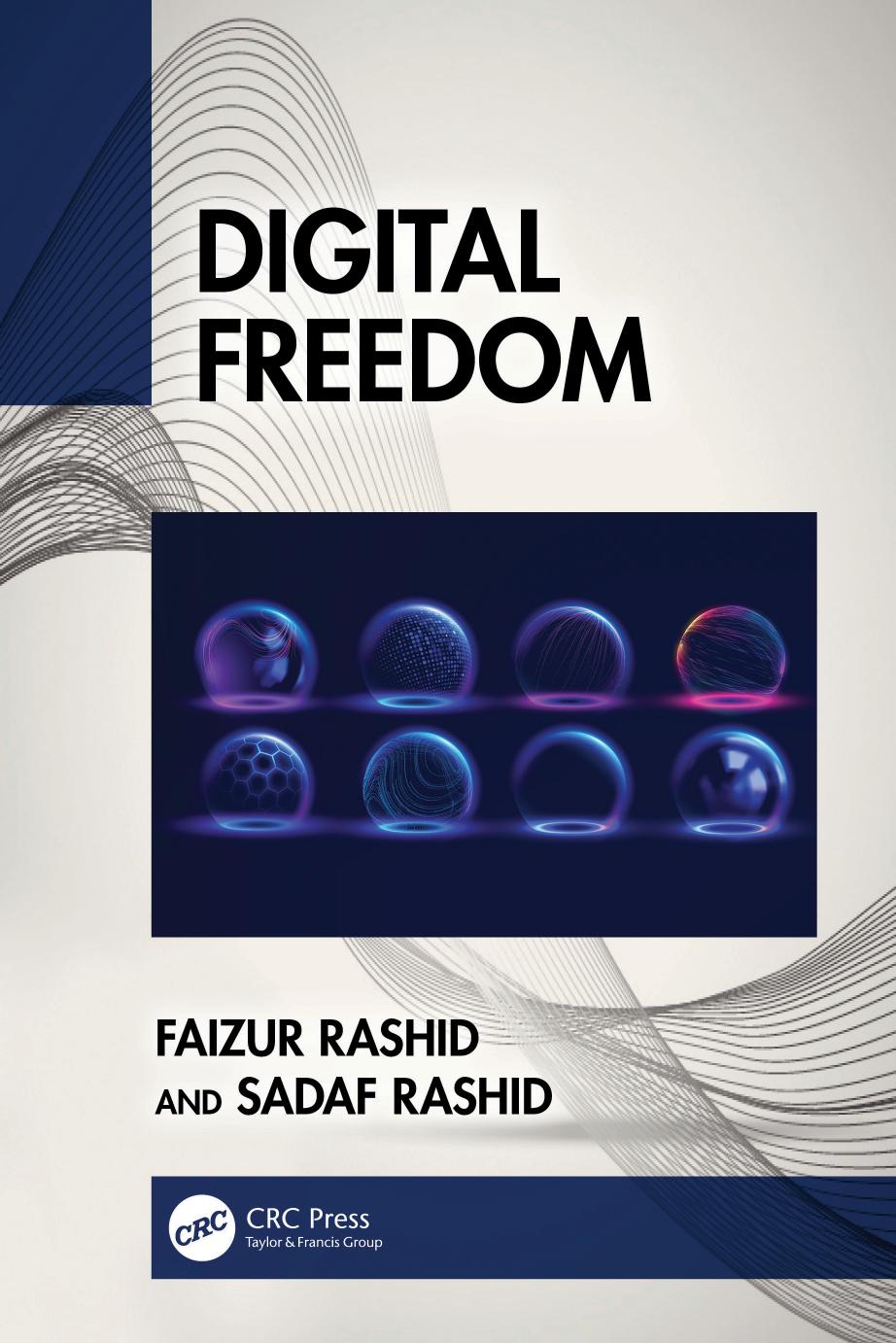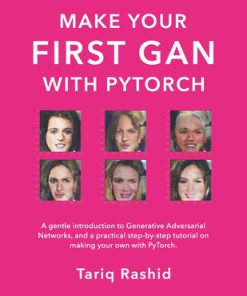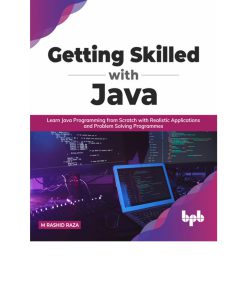Digital Freedom 1st Edition by Faizur Rashid, Sadaf Rashid ISBN 1032517506 9781032517506
$50.00 Original price was: $50.00.$25.00Current price is: $25.00.
Digital Freedom 1st Edition by Faizur Rashid, Sadaf Rashid – Ebook PDF Instant Download/Delivery: 1032517506 ,9781032517506
Full download Digital Freedom 1st Edition after payment

Product details:
ISBN 10: 1032517506
ISBN 13: 9781032517506
Author: Faizur Rashid, Sadaf Rashid
Digital Freedom 1st Edition Table of contents:
1 Digitalization
Summary
1.1 Introduction
1.1.1 What is “Digital”?
1.1.2 What is Digital Freedom?
1.2 Digital Transformation
1.2.1 Technological Advancements
1.2.2 Artificial Intelligence (AI)
1.2.3 Internet of Things (IoT)
1.2.4 Augmented Reality
1.2.5 Real-World Cases (1–2)
1.3 Why IS DIGITIZATION Important?
1.3.1 Digital Users
1.3.2 Rise of Smartphone Use
1.3.3 Real-World Cases (1-2)
1.4 What is a Digital Right?
1.4.1 Important Objectives of Digital Rights
1.4.2 Responsibilities in Digital Rights
1.4.3 What is “Digital Citizenship”?
1.5 Core Elements of Digital Freedom
1.5.1 Freedom of Communications
1.5.2 Freedom of Expression in a Digital Age
1.5.3 Digital Freedom in the COVID-19 Pandemic
1.6 Digital Democracy/e-democracy
1.6.1 What is Digital Democracy?
1.6.2 ICT and Corruption
1.6.3 Real-World Cases
1.7 Challenges and Difficulties (Nagaraja, 2016)
1.8 Chapter Conclusion
Exercises
References
2 Social Media and Digital Freedom
Summary
2.1 Introduction
2.1.1 Academic Opinions on Social Media
2.1.2 Social Media vs. Other Media
2.1.3 Types of Social Media
2.2 The Art of Social NetworkING
2.2.1 Benchmarks of Social Networks
2.3 Role of Social Media in the Digital Age
2.3.1 Justifications for Using Social Media in the Digital Age
2.3.2 Freedom of Expression, Speech, and Social Media
2.3.3 Social Media Censorship
2.3.4 Real-World Cases (1–6)
2.4 Online Hate Speech on Social Media
2.4.1 Hate Speech
2.4.3 Global Hate Speech
2.4.4 Real-World Cases (1–3)
2.5 Social Media Users in Asia-Pacific countries
2.5.1 WhatsApp Users in India and the World
2.5.2 Facebook Users in Asian Countries
2.5.3 Mobile Platforms in Asia
2.5.4 Current Trends in Media and Social Change
2.5.5 Real-World Cases
2.6 The Rise of E-Violence and Cybercrimes on Social Media
2.6.1 Different Types of Cyber Crimes
2.6.2 Most Common Types of Cyber Crimes
2.6.3 Cybercrimes on Social Media
2.6.4 Prevention and Security Measures
2.6.5 Advanced Technologies to Stop Cyber Attacks
2.6.6 Combating Cybercrime: Challenges
2.6.7 Initiatives for Combating Cybercrimes
2.6.8 Real-World Cases (1–3)
2.7 Social Media AND Politics
2.7.1 Polarization Through Social Media
2.7.2 Real-World Cases (1–3)
2.8 Chapter Conclusion
Exercises
References
3 Cyber Laws
Summary
3.1 Introduction
3.1.1 Types of Cyber Law
3.1.2 Advantages of Cyber Law
3.2 Cyber Laws in the World
3.2.1 United Nations
3.2.2 Europe (European Convention on Human Rights, Rome, 4.XI. 1950)
3.2.3 Council of the European Union
3.2.4 Australia (Office of Parliamentary Counsel, 2017)
Section 80.2A: Urging for Violence against Groups
3.2.5 Austria
New Legislation against Online Hate Speech (epicenter.works, 2020)
3.2.6 Turkey
Law No. 5651 (Official Gazette, 2020)
3.2.7 United Kingdom of Great Britain and Northern Ireland (Public Order Act, 1986)1
Section 21: Distributing, showing or playing a recording.
Section 23: Possession of racially inflammatory material.
Section 29B: Use of words or behaviour or display of written material
Section 29C: Publishing or distributing written material
Section 29D: Public performance of a play
Section 29E: Distributing, showing or playing a recording
Section 29J: Protection of freedom of expression
3.2.8 Venezuela (Nicholas, 2018)
Article 14: Social Networks’ Responsibility
3.2.9 Vietnam
Cybersecurity Law (Everus, 2018)
3.2.10 Brazil (Baretto et al.)
3.2.11 Canada (Callegari, 2022)
3.2.12 Real-World Cases
3.3 Cyber Laws in African Countries
3.3.1 South Africa (Government Gazette, Republic of South Africa)
Illegal interference of data or a computer program
3.3.2 South Sudan (Wanyama, 2021)
3.3.3 Ethiopia
3.3.4 Kenya (CIVIC SPACE, 2020)
Article 13: Hate speech
3.4 Cyber Laws in Asian Countries
3.4.1 Bangladesh
3.4.2 China (Creemers, Webster, and Triolo, 2018)
3.4.3 India
3.4.4 Indonesia (Kusbianto et.al., 2020)
3.4.5 Nepal (Nepal’s Constitution of 2015)
3.4.6 Pakistan (Details of IPC Sections 153A, 295 & 295A)
3.4.7 Real-World Case
3.5 Non-legal measures
3.6 Challenges in cyber laws: Indian scenario
3.7 Technological, Ethical, and Social Challenges
3.7.1 Technological Challenges
3.7.2 Ethical Challenges
3.7.3 Social Challenges
3.7.4 Social Challenges within the LBGT Community
3.8 Chapter Conclusion
Exercises
References
4 Pros and Cons of Digitalization
Summary
4.1 Introduction
4.2 Advantages of Digitalization
Social Connectivity
Communication Speeds
Digital Devices are Portable
Digital Learning Opportunities
Automation
Information Storage
Editing
Exact Duplication
GPS and Mapping
Transportation and Logistics
Entertainment Industry
Warfare
Digital Banking
Digitization of Restaurants/Digital Kitchen
Cryptocurrency
The Dark Web
4.3 Disadvantages and Challenges of Digitalization
Data Security
Protecting Privacy
Poor Students’ Academic Performance
Crime and Terrorism
Social Disconnect
Work Overload
Digital Media Manipulation
Complexity
Job Insecurity
Plagiarism and Intellectual Property
Anonymity and Fake Personas
Overreliance on Gadgets
Addiction
Artificial Living Style
Organization and Storage of Data
Longevity
Social Alienation
Psychological Effects
Physical Health Issues
Cryptocurrencies
The Dark Web
4.4 Chapter Conclusion
Exercises
References
5 Digital Education and Digital Library
Summary
5.1 Digital Education
5.1.1 Digital Freedom in Education
5.1.2 Digital Education System
5.1.3 Component of Digital Education
5.1.4 Impact of Digital Tools on Education
5.1.5 Real-World Case
5.2 Technological Trends in Digital Education
5.2.1 AI in Digital Education
5.2.2 Real-World Case
5.3 Information and Communication Technology (ICT) in Education
5.3.1 Database in Digital Education
5.3.2 Networking and Telecommunication in Digital Education
5.3.3 Changes in Digital Education during COVID-19
5.3.4 Real-World Cases (1–2)
5.4 Digitalization of Higher Education
5.4.1 Digital Libraries
5.4.2 Key Drivers for Online Education
5.4.3 Benefits and Challenges of Digital Libraries
5.4.4 Distance Education System
5.4.5 Real-World Cases (1–3 of India)
5.5 Digital Evaluation
5.5.1 Monitoring
5.5.2 Evaluation
5.6 Privacy and Security
5.6.1 Personal Data and its Importance
5.6.2 Threat to Privacy
5.7 Chapter Conclusion
Exercises
References
6 Digital Healthcare
Summary
6.1 Introduction
6.2 What is Digital Health?
6.2.1 A Few Definitions of Digital Health
6.2.2 Components of Digital Health
6.3 Growing Demand for the Digital Healthcare Market
6.3.1 Global Digital Healthcare Market
6.4 Medical Expert Systems
6.5 Impact of Information Systems in Digital Healthcare
6.5.1 Structure of Health Information Systems
6.5.2 Categories of Health Information Systems
6.5.3 Data and Information in Digital Healthcare
6.5.4 Integration of Electronic Health Records (EHR) in Healthcare
6.5.5 Applications of Health Information Systems
6.6 Digital Health Technologies
6.6.1 Telemedicine and Telehealth
6.6.2 Artificial Intelligence (AI) in Health
6.6.3 Electronic Health Records (HER)
6.6.4 Real-World Case: India
6.7 Transforming Factors of THE Digital Health Industry
6.7.1 Foreign Investments in Digital Health
6.7.2 Global Digital Health Initiatives and Strategies
6.7.3 Real-World Cases (1–2)
6.8 Chapter Conclusion
Exercises
References
7 Digital Agriculture and Digitalization in Food Industries
Summary
7.1 Introduction
7.1.1 Concept of Digital Agriculture
7.2 Need for Digitization in THE Agriculture Industry
7.3 Market Potential for Digital Agriculture
7.4 Digital Agriculture Technologies
7.4.1 Artificial Intelligence in Agriculture
7.4.2 Big Data in Agriculture
7.4.3 Agricultural Drones
7.4.4 Internet of Things in Agriculture
7.4.5 Impact of Digital Communication Tools on Agriculture
7.4.6 Other Digital Tools and Technologies in Agriculture
7.5 Digitalization in the Food Industry
7.5.1 Digital Transformation in the Food Industry
7.5.2 Digital Sensors in the Food Industry
7.5.3 Use of Artificial Intelligence and Robotics in the Food Industry
7.5.4 Blockchain Technology
7.5.5 Internet of Things (IoT) in the Food Industry
7.5.6 Role of 3D Food Printers
7.6 Chapter Conclusion
Exercises
References
8 Digital Banking and Finance
Summary
8.1 Introduction
8.1.1 What is Digital Banking?
8.1.2 Components of Digital Banking
8.2 Increasing Relevance of Digital Banking
8.2.1 Digital Transformation of Banking
8.2.2 Technological Revolution of Banking
8.2.3 Emerging Technologies in Digital Banking
8.3 Impact of Digitalization in Banking
8.3.1 Benefits of Digital Banking System
8.4 What is Digital Payment?
8.4.1 The New Frontiers in Digital Payments
8.4.2 Real-World Case
8.5 Digital Finance Sector
8.5.1 Impact of Financial Technology (FinTech)
8.5.2 Influence of FinTech on the Financial Sector
8.6 Chapter Conclusion
Exercises
References
9 Digital Logistics
Summary
9.1 Introduction
What is Digital Logistics?
9.2 Need for Digitalization in Logistics
9.3 Impact of Digitalization on the Logistics Industry
IoT and Logistics Industry
Benefits of IoT in the Logistics Industry
Consumer Benefits from IoT
AI in Shipping and Logistics
Autonomous Technology
Applications of Machine Learning in the Logistics Industry
Cloud Computing in Logistics
9.4 Logistics Using Fleet Telematics
Advantages of fleet telematics in the logistics industry (Shaikh, 2022)
9.5 Efficiency in Logistics’ Effect on Economic Development
Road Infrastructure
Airport Infrastructure
Railway Infrastructure
9.6 Chapter Conclusion
Exercises
References
10 E-Commerce Digitalization
Summary
10.1 Introduction
10.1.1 Digital Shopping Applications
10.2 The Concept of E-commerce
10.2.1 Types of E-Commerce
10.2.2 Role of Digitalization in E-Commerce Markets
10.2.3 The World’s Fastest-Growing Digital Market
10.2.4 Factors for E-Commerce Growth
10.3 Current Trends and Future Prospects of E-commerce
10.3.1 Digital Platforms in E-Commerce
10.3.2 Digital Technologies in E-Commerce Growth
10.3.3 Impact of E-Payment on E-Commerce Growth
10.3.4 Real-World Cases (1–2)
10.4 Connectives of Logistics and E-Commerce
10.4.1 E-Commerce and Logistics Management System
10.4.2 E-Commerce Impact in Logistics
10.5 E-Commerce Challenges
10.6 M-commerce
10.7 Chapter Conclusion
Exercises
Referenaces
Index
People also search for Digital Freedom 1st Edition:
reliance digital freedom sale
school digital freedom hub
is digital freedom legit
reliance digital freedom sale 2024
is digital freedom legitimate
Tags: Faizur Rashid, Sadaf Rashid, Digital Freedom
You may also like…
Computers - Programming
Make Your First GAN With PyTorch 1st Edition by Tariq Rashid ISBN 9798624728158 8624728150
Computers - Web Development
Computers - Programming
Engineering - Energy & Power Resources
Business & Economics - Small Business
Engineering - Social & Cultural Aspects of Technology
Religion & Spirituality - Islam
Shariah A Divine Code of Life 1st Edition Abdur Rashid Siddiqui











